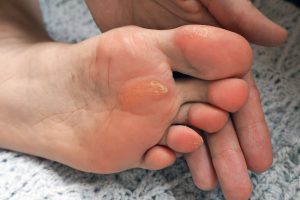Available Treatment Options for Corns & Calluses
Expert Solutions: Trusted Treatments for Corns & Calluses Relief
Corns and calluses are common foot conditions that many individuals experience at some point in their lives. While they might seem similar, there are distinct differences between the two. Both conditions arise due to repeated friction or pressure on specific areas of the foot. This article aims to shed light on the differences between corns and calluses, their causes, and the best treatment options available. Whether you’re currently dealing with the discomfort of these conditions or simply want to be informed, this comprehensive Q&A guide is here to help.
At East Gosford Podiatry, we understand the discomfort and pain that corns and calluses can bring. Our team of experienced podiatrists is dedicated to providing the best care and treatment options tailored to each individual’s needs. With our expertise and commitment to patient care, you can trust East Gosford Podiatry to guide you on the path to healthier feet.
What are corns and calluses?
Corns
Corns are small, circular, and raised patches of hardened skin that usually develop on the tops and sides of the toes. They can be painful when pressed and often have a central core that points inward. Corns primarily form due to friction from shoes that don’t fit properly or from not wearing socks with shoes. There are two main types of corns: hard corns, which are usually found on the tops of toes or on the outer sides of little toes, and soft corns, which appear between the toes and are kept soft due to moisture from sweat.
Calluses
Calluses, on the other hand, are larger patches of tough, yellowish skin that can develop anywhere on the foot but are most commonly found on the soles. Unlike corns, calluses are usually not painful and spread out more broadly. They form as a result of repeated pressure on the foot, such as from walking or standing for long periods. Activities that put repeated pressure on the foot, like jogging or wearing high heels, can also contribute to callus formation.
Both corns and calluses are the body’s natural response to protect the skin from pressure and friction. However, if not addressed, they can lead to more severe foot problems, especially in individuals with diabetes or other conditions that affect blood flow to the feet.




